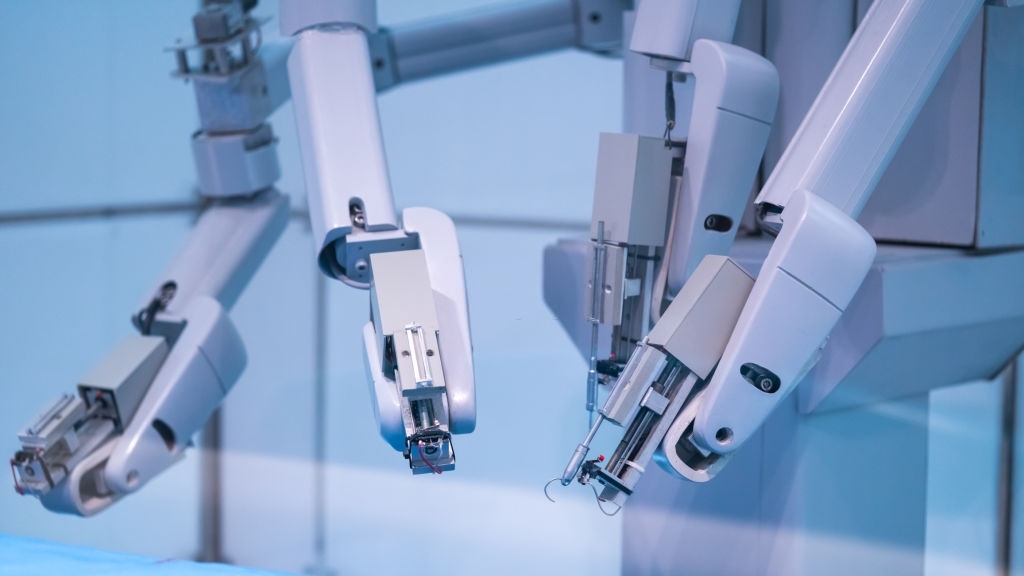Robotic process automation (RPA) is a hot topic today, but many healthcare leaders haven’t yet grasped the potential of this powerful technology to accelerate digital transformation within the healthcare sector.
Automation solutions have the potential to save millions of dollars in costs while improving patient satisfaction scores. Yet, there are many healthcare professionals who have never heard of RPA or don’t understand how it can be used in their organization.
In this article, I’ll explain why RPA technology is good news for the healthcare industry – and outline 6 ways it can help improve critical healthcare workflows and slash costs.
Let’s dive in.
But first: what is Robotic Process Automation?
Robotic Process Automation (RPA) leverages artificial intelligence (AI) to automate routine tasks. RPA software is used in many industries including healthcare & pharmaceuticals, insurance, and government.
Business process automation isn’t new. It’s been around for decades, but until recently it was an expensive and custom-made solution that few could afford.
The use of robotics in factories has increased operational efficiency and flexibility in the manufacturing sector, making it possible to improve production without adding headcount or increasing over-time. Today, that same technology is being re-worked to perform routine office tasks in a way that benefits businesses all over the world.

And the results have been staggering.
The market for robotic process automation has exploded over the past few years, with Grand View Research expecting revenues to surpass $25 billion by 2027. Adoption is also rising fast among many businesses, with a recent Deloitte study reporting that 53% of respondents have already started their RPA journey.
In order not to miss out on these massive gains, it’s imperative for healthcare leaders to start exploring ways to leverage RPA technology in their organizations.
Robotic Process Automation in Healthcare
The US healthcare industry is large and complex. Every year, hundreds of healthcare companies collectively spend billions of dollars to keep the healthcare system running smoothly.
Throw in changes to the reimbursement models for Medicaid and Medicare patients, and the healthcare industry has seen an increase in data volume with different parties needing to share patient data seamlessly and efficiently.
This barrage of information can result in significant bottlenecks when it comes to verifying patient data for regulatory compliance purposes or clinical research efforts.
Enter RPA software.

Most healthcare leaders have the wrong idea of what software robots can do for their organization. The common view is that RPA software is only useful for automating back office or administrative tasks — but it’s much more powerful than that.
In a healthcare organization, RPA technology can streamline critical operations and save time, which means improved care, less waste, and greater operational efficiency. To help you understand just how impactful RPA software can be to healthcare processes, here are 6 use-cases in no particular order:
- Simplifying appointment scheduling
- Settling accounts faster
- Streamlining claims processing
- Monitoring patients after discharge
- Logging audit procedures
- Mining insights from data
Let’s look at each one in turn.

#1 Simplifying appointment scheduling
Scheduling appointments can be a tedious manual process for most doctors and patients. A lot of information also needs to be collected, including the patient’s personal information, diagnosis, and insurance details.
RPA bots can automate this entire process by doing two things: scanning patient data automatically and scheduling optimal appointment times based on dates, location, and availability. They can also maintain communication between both parties with timely notifications.
#2 Settling accounts faster
Billing and revenue cycle management are complex processes for the average healthcare organization. Revenue cycle leaders have an ongoing need to monitor, calculate, evaluate, and verify costs incurred and payments received by each patient. Apart from the significant time costs, such a manual process also invites human error and delay.
An RPA solution can streamline and speed up this entire process by automatically and accurately calculating costs based on treatment type and duration, patient insurance information, and doctor’s fees. This ensures billing records are always up to date and gives greater insight into the revenue cycle.

#3 Streamlining claims processing
Claims processing involves lots of data entry, evaluation, and appeals. Doing this manually can result in human error and poor patient satisfaction. Throw in outdated insurance claims and the revenue cycle could be affected.
An RPA tool can help speed up the claims process by processing data faster, identifying compliance-related exceptions sooner, and minimizing errors in the claims process.
#4 Monitoring patients after discharge
After consultations or operations, patients may receive medication with instructions on how to manage their symptoms. However, healthcare institutions are unable to monitor patient compliance with these instructions, which may lead to repeat visits and poor patient outcomes.
RPA bots can send patients reminders about discharge guidelines, upcoming appointments, and medication schedules to ensure treatment compliance, enhance patient care, and reduce readmissions.
#5 Logging audit procedures
Audits for patient safety and service quality involve assessing risks and generating multiple reports. These reports need to be collected, reviewed, and approved by different people within the organization, and any delays or errors could result in non-compliance penalties.
An RPA bot can record relevant data, generate accurate reports, send them to relevant parties, and track any pending reviews, approvals, and non-compliance events.

#6 Mining insights from data
The sheer volume of patient data collected from disparate systems makes it hard to extract useful insights when needed. Plus, patient data increases every day with each new patient served, so the problem compounds into an administrative burden over time.
RPA software records and monitors growing volumes of data in real-time, helping to optimize and extract relevant data on demand. Leveraging these analytics gives healthcare leaders insights into bottlenecks in their healthcare processes and supply chain.
Get started
Managing a healthcare organization involves many moving parts, from patient care and remote monitoring to service assessments and revenue cycle management. These tasks need to be done quickly, accurately, and cost-effectively to reduce the administrative burden for healthcare staff.
RPA implementation helps healthcare workers to automate these workflows and enjoy faster, better, outcomes. And with these automation solutions improving every day through machine learning and intelligent automation advancements, there has never been a better time for healthcare leaders to tap into the possibilities.

Mohammed Shehu, Ph.D. writes on content and marketing for creators and brands. You can find him online @shehuphd everywhere.

